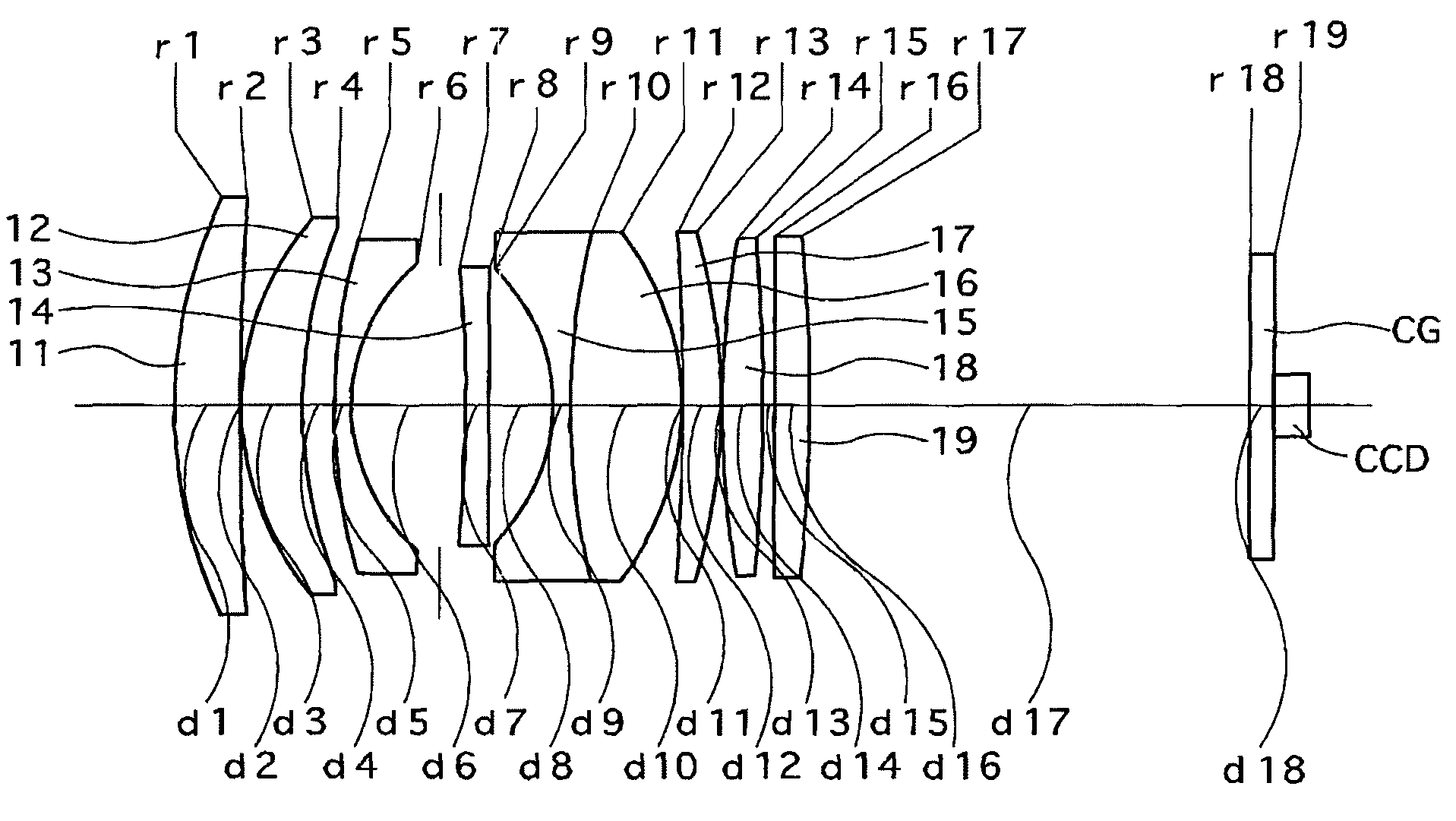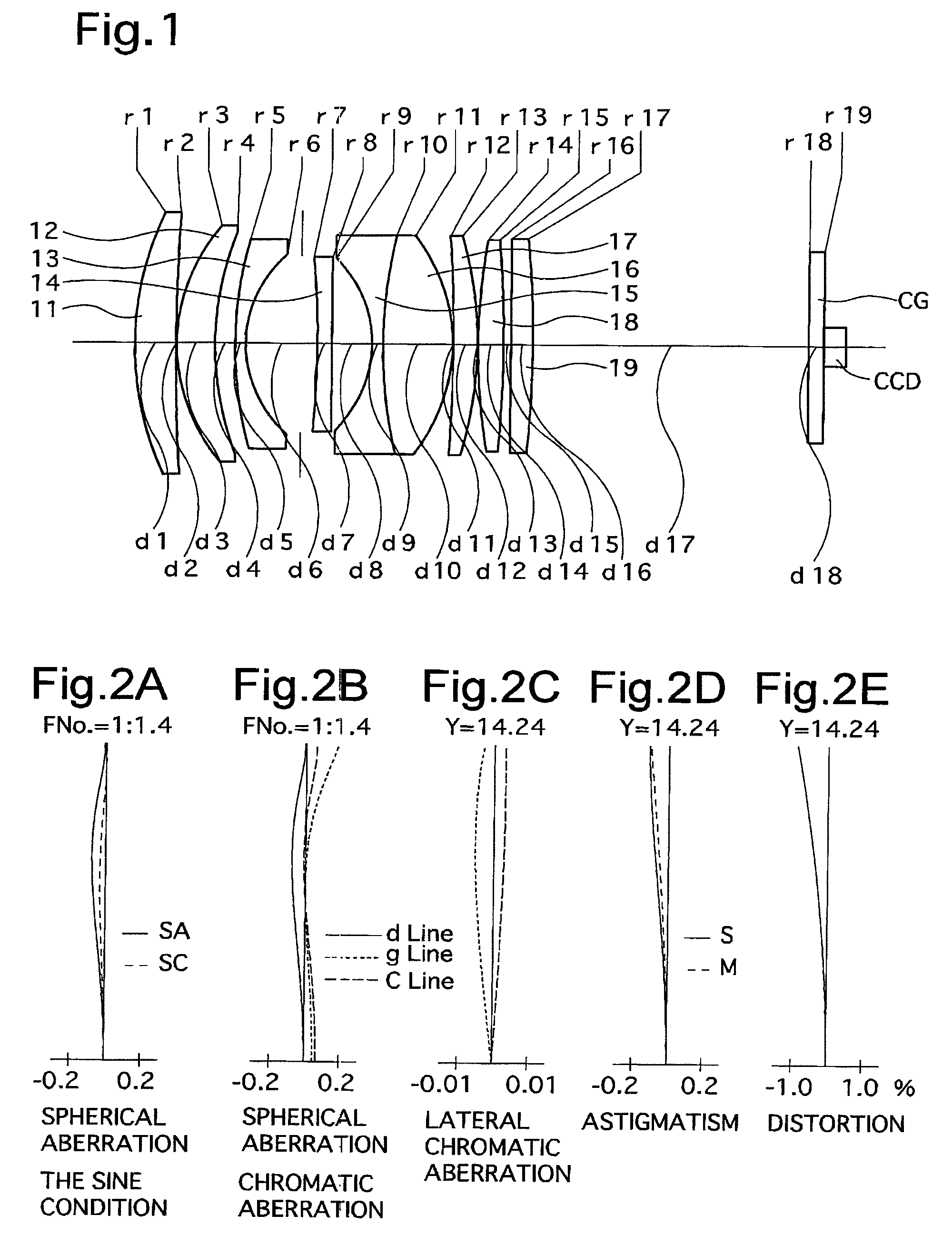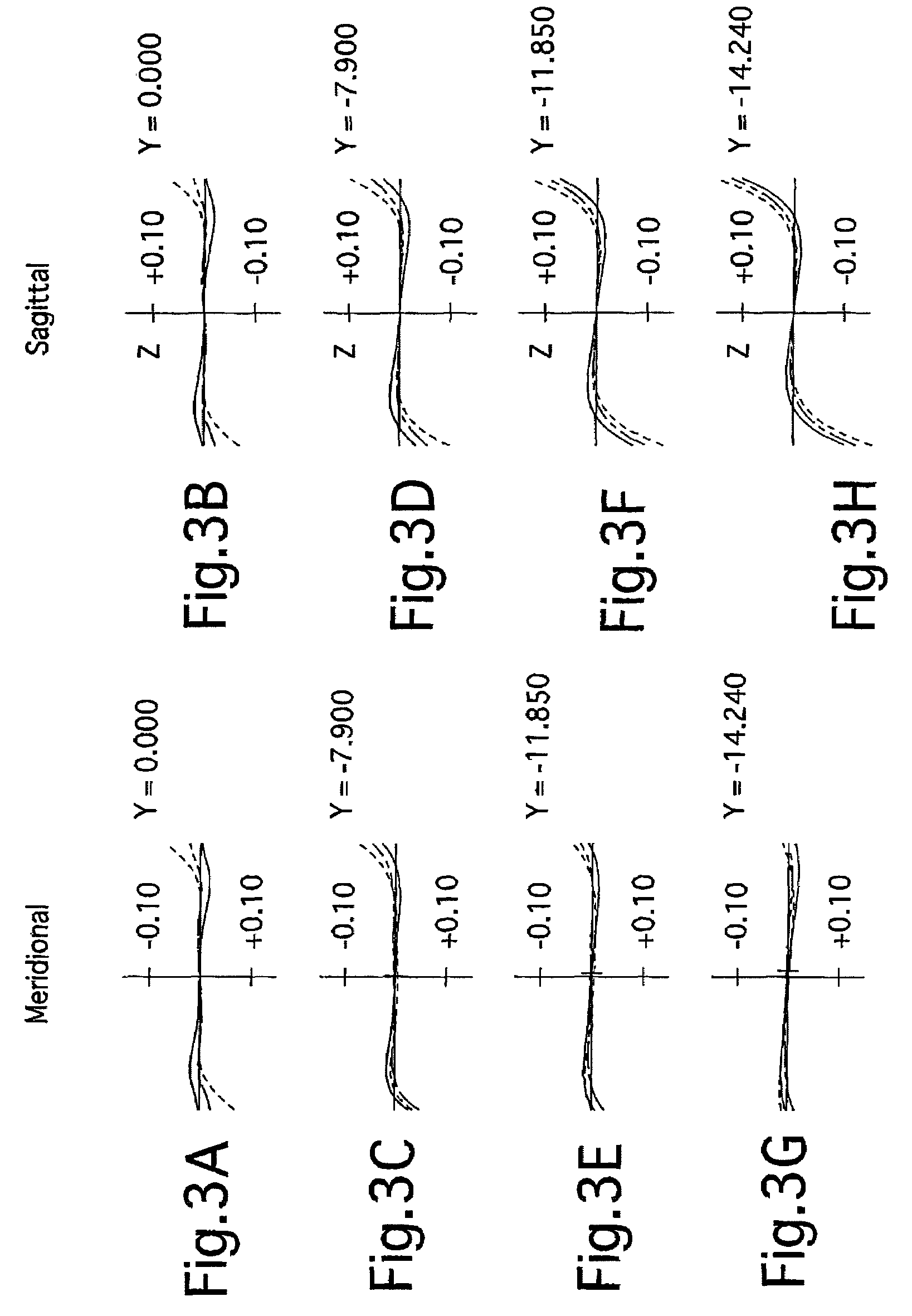Photographic lens system and electronic imaging device using the same
a technology of electronic imaging device and lens system, applied in the field of photographic lens system, can solve the problems of difficult optical arrangement for and achieve the effect of facilitating correcting sagittal lateral aberration and facilitating adequate correction of sagittal lateral aberration
- Summary
- Abstract
- Description
- Claims
- Application Information
AI Technical Summary
Benefits of technology
Problems solved by technology
Method used
Image
Examples
embodiment 1
[0055]FIG. 1 shows the lens arrangement of the first embodiment of a photographic lens system according to the present invention. FIGS. 2A through 2E show aberrations occurred in the lens arrangement shown in FIG. 1 when an object at infinity is in an in-focus state. FIGS. 3A through 3H show lateral aberrations occurred in the lens arrangement shown in FIG. 1.
[0056]Table 1 shows the numerical data of the first embodiment.
[0057]The photographic lens system described in the following first through third embodiments has an angle-of-view of 14° which is more telescopic compared to a standard lens system (having an angle-of-view of, e.g., approximately) 23°).
[0058]The photographic lens system of the first embodiment includes a positive meniscus lens element 11 having the convex surface facing toward the object, a positive meniscus lens element 12 having the convex surface facing toward the object, a negative meniscus lens element 13 having the concave surface facing toward the image, a d...
embodiment 2
[0063]FIG. 4 shows the lens arrangement of a second embodiment of a photographic lens system according to the present invention. FIGS. 5A through 5E show aberrations occurred in the lens arrangement shown in FIG. 4 when an object at infinity is in an in-focus state. FIGS. 6A through 6H show lateral aberrations occurred in the lens arrangement shown in FIG. 4.
[0064]Table 2 shows the numerical data of the second embodiment.
[0065]The fundamental lens arrangement of the second embodiment is the same as that of the first embodiment.
[0066]The diaphragm S is provided 6.76 behind (on the image side of) the third lens element (negative meniscus lens element) 13 (surface No. 6).
[0067]
TABLE 2FNO. = 1:1.5f = 56.07M = −0.173W = 14.4fB = 0.0Surface No.rdNdν165.5694.321.7725049.62550.2080.10329.2805.741.8061040.9456.3203.22566.3921.411.6989530.1619.9988.357−150.0002.001.5814440.78∞5.449−20.0961.351.7618226.51065.0438.851.8340037.211−29.5630.1012−332.5323.551.7859044.213−65.7070.1014115.4513.461.77...
embodiment 3
[0068]FIG. 7 shows the lens arrangement of the third embodiment of a photographic lens system according to the present invention. FIGS. 8A through 8E show aberrations occurred in the lens arrangement shown in FIG. 7 when an object at infinity is in an in-focus state. FIGS. 9A though 9H show lateral aberrations occurred in the lens arrangement shown in FIG. 7.
[0069]Table 3 shows the numerical data of the third embodiment.
[0070]The fundamental lens arrangement of the third embodiment is that same as that of the first embodiment.
[0071]The diaphragm S is provided 6.80 behind (on the image side of) the third lens element (negative meniscus lens element) 13 (surface No. 6).
[0072]
TABLE 3FNO. = 1:1.4f = 56.36M = −0.173W = 14.3fB = 0.02Surface No.rdNdν154.3004.851.7725049.62373.7300.10329.9895.981.8061040.9453.3402.55566.7621.411.6989530.1619.4659.587−150.0002.001.5814440.78∞5.519−19.3801.501.7618226.51075.2109.421.8340037.211−29.2500.1012−244.6683.381.8061040.913−60.0000.1014110.0003.781.59...
PUM
 Login to View More
Login to View More Abstract
Description
Claims
Application Information
 Login to View More
Login to View More - R&D
- Intellectual Property
- Life Sciences
- Materials
- Tech Scout
- Unparalleled Data Quality
- Higher Quality Content
- 60% Fewer Hallucinations
Browse by: Latest US Patents, China's latest patents, Technical Efficacy Thesaurus, Application Domain, Technology Topic, Popular Technical Reports.
© 2025 PatSnap. All rights reserved.Legal|Privacy policy|Modern Slavery Act Transparency Statement|Sitemap|About US| Contact US: help@patsnap.com



